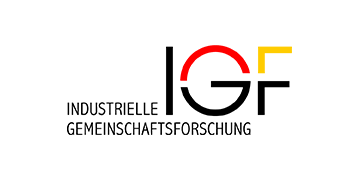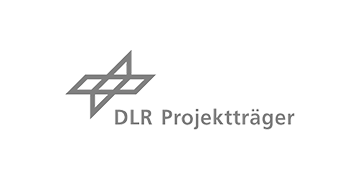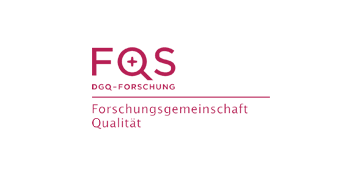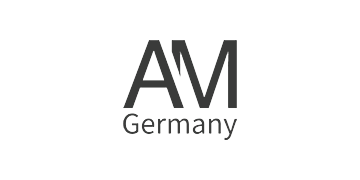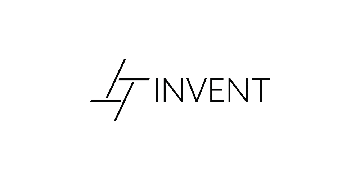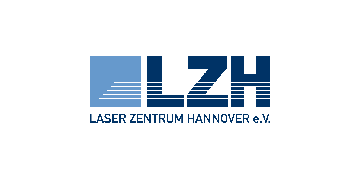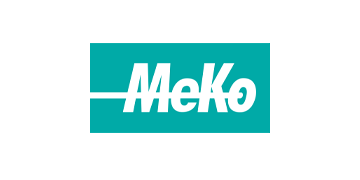| Theme | Additive Manufacturing |
|---|---|
| Project title | Quality assurance in laser beam welding of additively manufactured thermoplastic components (QualLa) |
| Project duration | 01.01.2021 – 30.04.2023 |
| Results | |
| Download | |
| Press release |
Fused Deposition Modeling (FDM) is a subfield of additive manufacturing that can be used to produce components from thermoplastics. The method is particularly suitable for prototyping, the production of small batches and for personalized products. In contrast to conventional methods like injection molding, there is no requirement for upstream processes such as the production of tools. Larger and more complex assemblies result in the need to join additively manufactured components. A flexible and industrially established joining process for thermoplastics is through transmission laser welding. In practice, the laser process needs to be individually adapted to the component shape, the transmission behavior and the melting point of the respective plastic.
The way in which components manufactured using FDM are built up layer by layer results in local changes in the transmission of the laser through the transparent joining partner. As a result, the joining process must be controlled locally depending on the degree of transmission.
The objective of the QualLa research project is to develop a procedure that enables through transmission laser welding of components manufactured by FDM. Building up process knowledge can be a challenge for small and medium-sized enterprises (SMEs) due to financial and personnel limitations. For this reason, an expert system is to be developed for process support as part of the project. The expert system is intended to capture the necessary expertise to allow quality-assured use, so that the employees of SMEs can use the technology without complete knowledge of the process technology.
- Sorry, no events available.
Vergangene Termine gefunden
- 23.03.2021
- Online-Meeting
- 30.09.2021, 09:00 h - 12:00 h
- Online Meeting
Publications about the project
In order to use laser transmission welding (LTW) for additively manufactured parts such as prototypes, small series, or one-off products, an enhanced process knowledge is needed to overcome the difficulties in the part composition resulting from the additive manufacturing process itself. In comparison to an injection molding process for thermoplastic parts, the additive manufacturing process fused deposition modeling leads to an inhomogeneous structure with trapped air inside the volume.
In this paper, a neural network-based expert system is presented that provides the user with process knowledge in order to improve the weld seam quality of laser welded additively manufactured parts. Both additive manufacturing and LTW process are assisted by the expert system. First, the designed expert system supports the user in setting up the additive manufacturing process to increase the transmissivity. During welding, the additive manufacturing and LTW process parameters are used to predict the weld seam strength. To create the database for the expert system, specimens of transparent and black polylactide are additively manufactured. In order to change the transmissivity at an emission wavelength of 940?nm of the diode laser used, the manufacturing parameters for the transparent parts are varied. The transmissivity of the parts is measured with a spectroscope. The transparent samples are welded to the black samples with laser powers between 8 and 14?W in the overlap configuration and shear tensile tests are performed. In this work, the predictions of the transmissivity and the shear tensile force are demonstrated with an accuracy of more than 88.1% of the neural networks used for the expert system.
Additive manufacturing, laser transmission welding, neural networks, expert system
Laser transmission welding (LTW) is a known technique to join conventionally produced thermoplastic parts, e.g. injected molded parts. When using LTW for additively manufactured parts (usually prototypes, small series), this technique has to be evolved to overcome the difficulties in the part composition resulted in the additive manufacturing process itself.
In this paper, a method is presented to enhance the weld seam quality of laser welded additively manufactured parts assisted by a neural network-based expert system. To validate the expert system, specimens are additively manufactured from polylactide. The parameters of the additive manufacturing process, the transmissivity, and the LTW process parameters are used to predict the shear tensile force with the neural network. The transparent samples are welded to black absorbent samples in overlap configuration and shear tensile tests are performed. In this work, the prediction of the shear tensile force with an accuracy of 88.1 % of the neuronal network based expert system is demonstrated.
Additive manufacturing, laser transmission welding, neural networks, expert system
How can additively manufactured components be laser welded? Their layered structure makes the welding process more complicated than for conventionally produced parts. IPH and LZH are jointly researching how components can nevertheless be joined in a quality-assured manner.
Additive manufacturing, 3D printing, laser transmission welding, joining, quality
Laser transmission welding (LTW) is a known technique to join conventionally produced high volume thermoplastic parts, e.g. injected molded parts for the automotive sector. For using LTW for additively manufactured parts (usually prototypes, small series, or one-off products), this technique has to be evolved to overcome the difficulties in the part composition resulted in the additive manufacturing process itself. In comparison to the injection molding process, the additive manufacturing process leads to an inhomogeneous structure with trapped air inside the volume. Therefore, a change in the transmissivity results due to the additive manufacturing process.
In this paper, a method is presented to enhance the weld seam quality of laser welded additively manufactured parts assisted by a neural network-based expert system. The designed expert system supports the user setting up the additive manufacturing process. With the results of a preliminary work, a neural network is trained to predict the transmissivity values of the transparent samples. To validate the expert system, specimen of transparent polylactide are additively manufactured with various manufacturing parameters in order to change the transmissivity. The transmissivity of the parts are measured with a spectroscope. The parameters of the additive manufacturing process are used to predict the transmissivity with the neural network and are compared to the measurements. The transparent samples are welded to black polylactide samples with different laser power in overlap configuration and shear tensile tests are performed. With these experiments, the prediction of additive manufacturing parameters with the expert system in order to use the parts for a LTW process is demonstrated.
Additive manufacturing, laser transmission welding, neural networks, expert system
In order to enable even complex processes such as the joining of additively manufactured components by laser in production in a quality-assured way, the existence of specialist knowledge in companies is absolutely essential. To bundle this knowledge for process control and monitoring independently of personnel, an expert system is being developed in the IGF research project of FQS - Forschungsgemeinschaft Qualität e.V. entitled "Quality assurance in laser beam welding of additively manufactured thermoplastic components (QualLa)". By integrating specialist knowledge into the expert system, this knowledge can be secured in companies in the long term and processes can continuously be carried out with high qualitative standards.
additive manufacturing, 3D printing, FDM, laser transmission welding, laser beam welding


